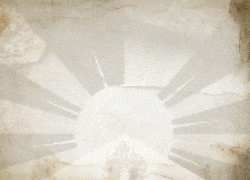By Rosie Kusunoki Jones
‘The Sun Behind the Clouds: Tibet’s Struggle for Freedom’
DIRECTORS: Ritu Sarin and Tenzing Sonam
WHERE: At the Shattuck in Berkeley and the Opera Plaza in S.F.
RATING: NR (contains some graphic images of violence)
RUNNING TIME: 1 hour, 19 minutes
LANGUAGE: In Tibetan and Chinese with subtitles
Of the many documentaries that have chronicled Tibet’s ongoing struggle for independence, “The Sun Behind the Clouds” offers the most thorough, balanced and up-to-date assessment of the dilemma facing Tibetans under oppressive Chinese rule.
Co-directed by married Tibetans-in-exile Ritu Sarin and Tenzing Sonam (the latter also narrates), the film makes it clear that the dilemma is not simply the obstacle of Chinese rule, but also the growing divide between the Dalai Lama (whose “Middle Way” favors Tibetan autonomy under Chinese rule) and masses of younger, outraged Tibetans, in and out of exile, who seek unconditional Tibetan independence.
This impasse puts the 74-year-old Dalai Lama in a sticky situation. As Tibet’s spiritual and political leader, he promotes a coexistence with China that growing numbers of Tibetans refuse to accept.
Meanwhile, China stokes the conflict, claiming that Tibetans have lost faith in the Dalai Lama, whom the Chinese characterize as a conspiratorial, dishonest leader of “a feudal serfdom.” Chinese authorities also sought to cancel the North American premiere of “The Sun Behind the Clouds” at this year’s Palm Springs Film Festival. (When programmers refused, China pulled two of its films from the festival schedule.)
Combining archival footage, breathtaking images of present-day Tibet and interviews with prominent Tibetan freedom activists, the film establishes a rich historical context that spans from the failed 1959 Tibetan uprising (which solidified China’s dominance and prompted the Dalai Lama’s exile) to the news-making independence rallies staged around the world before the 2008 Beijing Olympics.
The Dalai Lama granted intimate access to the filmmakers and speaks eloquently about his philosophical preference for the “Middle Way.” But even his calming presence can’t deny reality: As Tibetan culture continues to fade, Tibetan protests and global outrage will escalate, and China’s oppression will force the struggle for independence to reach critical mass.









